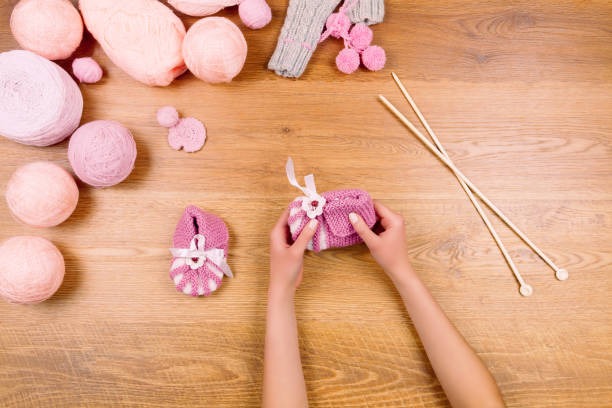In a world where sustainability is becoming increasingly important, many people are searching for ways to reduce their environmental impact, even when it comes to baby clothes. Knitting at home offers a wonderful solution. Not only is it a creative and relaxing hobby, but it also provides an eco-friendly alternative to fast fashion babywear. Using knitting patterns, anyone can create beautiful, personalised baby clothes that are gentle on the planet. Let’s explore how knitting baby clothes at home can help the environment and why patterns are key to making the process accessible and efficient.
The Environmental Impact of Fast Fashion Baby Clothes
Fast fashion baby clothes might be cute and convenient, but their environmental cost is significant. The baby clothing industry contributes to massive amounts of waste, pollution, and carbon emissions. Babies grow quickly, so clothes are often worn only a few times before being discarded. This leads to a lot of textile waste filling landfill sites. Moreover, synthetic fibres commonly used in cheap baby clothes can take hundreds of years to decompose and often release microplastics into the environment. By understanding this impact, it becomes clear why alternatives like hand-knit babywear are worth considering. Here are some creative options for baby outfits.
How Knitting at Home Reduces Environmental Footprint
Knitting baby clothes at home can drastically reduce your environmental footprint in several ways. For starters, you can choose natural, eco-friendly yarns such as organic cotton, bamboo, or wool. These fibres break down naturally and are often produced with less harmful chemicals. Additionally, knitting at home eliminates the need for extensive packaging and transportation, which are big contributors to carbon emissions in the retail industry. When you knit your own clothes, you also make exactly what you need, avoiding the waste associated with overproduction or excess stock that’s common in mass retail.
The Role of Patterns in Sustainable Knitting
Patterns play an important role in making sustainable knitting accessible to everyone. Following a pattern means you’re less likely to make mistakes, which reduces yarn wastage. Patterns also help you plan your project carefully, so you only use the materials you need. This level of precision means fewer leftover scraps and less waste overall. Many patterns are also very versatile, allowing knitters to modify designs or repurpose yarn from other projects. This adaptability is perfect for upcycling and further supports eco-friendly crafting.
Economic and Social Benefits of Home Knitting
Beyond the environmental perks, knitting baby clothes at home is a great way to save money. Baby clothes can be expensive, especially if you opt for organic or sustainable brands. Making your own items allows you to cut costs while still choosing environmentally responsible materials. Plus, there’s something special about gifting or using a hand-knitted piece—it adds a personal touch that store-bought clothes simply can’t match. Many knitters also enjoy connecting with local yarn producers and eco-conscious suppliers, which supports small businesses and communities.
Tips for Eco-Friendly Knitting Projects for Babies
If you’re keen to start knitting baby clothes sustainably, here are a few tips to keep in mind. First, select yarns that are sustainably sourced and dyed using eco-friendly methods. Look for certifications like GOTS (Global Organic Textile Standard) or OEKO-TEX. Secondly, try to reuse or recycle leftover yarn scraps instead of discarding them. You can incorporate scraps into smaller projects like booties or hats. Finally, choose beginner-friendly, zero-waste patterns that maximise yarn usage and minimise waste. Many free and paid patterns online focus on eco-conscious designs.
How to Get Started: Resources and Patterns
Ready to give eco-friendly baby knitting a go? Start by finding reliable resources and patterns online. Websites like Ravelry, LoveCrafts, and Etsy offer a wide range of baby knitting patterns, many with sustainable options. You can also find books focused on eco-friendly knitting projects at your local library or bookstore. As a beginner, invest in basic knitting needles and a few skeins of eco-friendly yarn to practice. Joining knitting communities, whether online or in person, is another great way to get tips, support, and pattern recommendations.
Conclusion
Knitting baby clothes at home using patterns is an excellent way to combine creativity with sustainability. It helps reduce the environmental impact of fast fashion, supports small businesses, and results in unique, heartfelt gifts. Whether you’re an experienced knitter or just starting out, there are plenty of eco-friendly patterns and resources available to make your knitting journey enjoyable and green. So why not pick up some yarn and needles, try a simple baby pattern, and be part of the growing movement towards more sustainable living?

